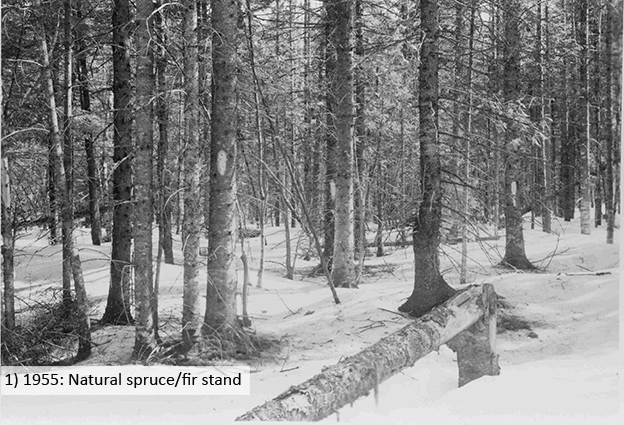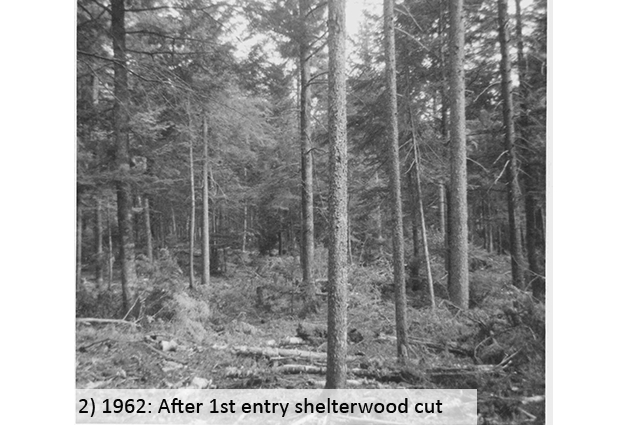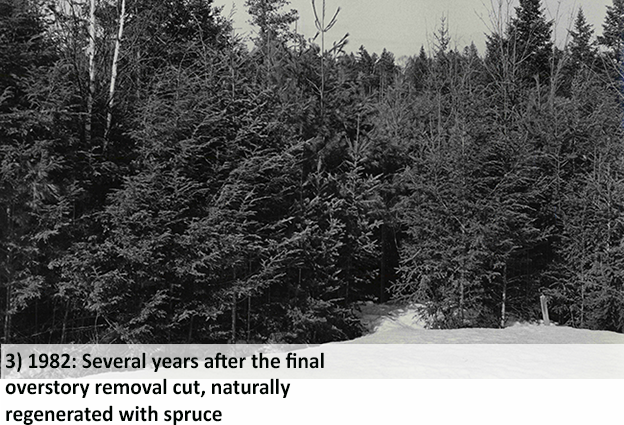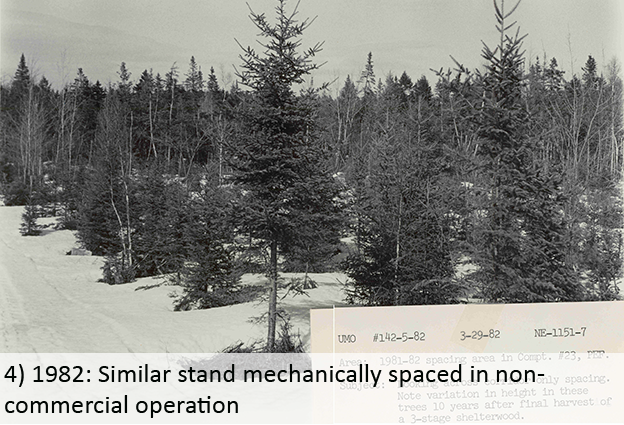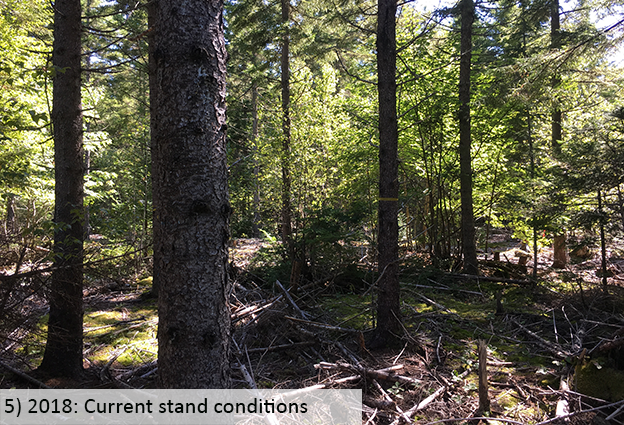DACF Home → Bureaus & Programs → Maine Forest Service → Projects → What will my woods look like? → Historic Shelterwood: Spruce stand
Historic Shelterwood
Site: Spruce stand
Shelterwood through time
Shelterwood is a silvicultural method of regenerating new forest stands by harvesting all mature trees in an area in a series of 2 or more cuts occurring within 10-20 years.
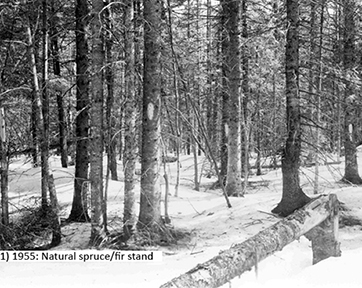
1955: Natural spruce/fir stand
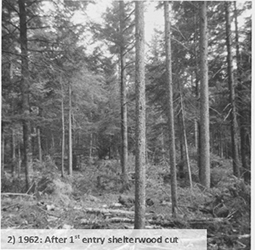
1962: After 1st entry shelterwood cut
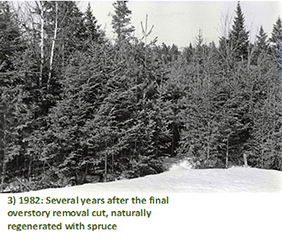
1982: Several years after the final overstory removal cut, naturally regenerated with spruce
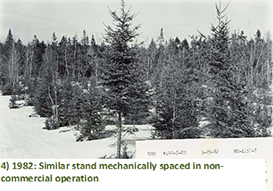
1982: Similar stand mechanically spaced in non-commercial operation
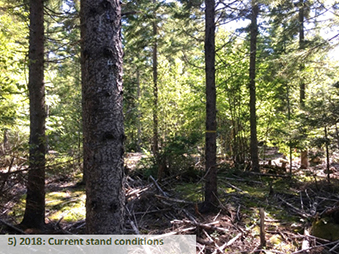
2018: Current stand conditions
Location:
Penobscot Experimental Forest, Bradley and Eddington
U.S. Forest Service, Northern Research Station
Andrew Richley, Forester; 207-866-7255
Laura Kenefic, Research Forester and Silviculturist
Maren Granstrom, University of Maine graduate student
×
